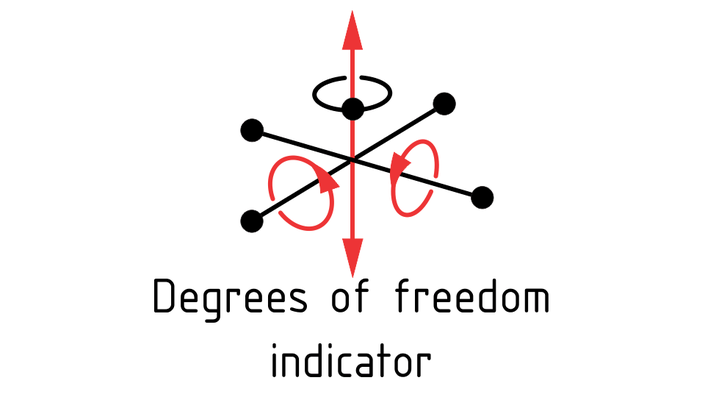
GPS 121 - Degrees of Freedom Analysis
Understand how tolerance zones lock toleranced features
If you use geometrical tolerancing within GPS, sooner or later you are going to ask yourself exactly how a particular tolerance zone locks the toleranced feature. Does it just lock the form deviation (shape) of the feature? Does it lock the orientation (rotation) of the feature? If so, in which directions? Does it keep the feature in a particular position? In all three directions,or only one or two?
Degrees of freedom analysis is the tool you use to analyze how tolerance zones lock the toleranced features and answer these questions. It is the key to understanding geometrical tolerancing.
The course introduces the degrees of freedom indicator (DoF indicator), which is a graphical tool you can use to visualize exactly which degrees of freedom are locked by a particular geometrical tolerance.
The DoF indicator is a valuable tool, when you discuss geometrical tolerances with colleagues or try to explain to a supplier or customer exactly what movement a particular tolerance allows and what it locks.
I also use the DoF indicator in later geometrical tolerancing courses to explain what is locked about a tolerance zone and what movement is allowed - and how that in turn constrains the toleranced feature.
I personally think that the degree of freedom concept is key to understanding geometrical tolerancing. It requires taking a step back from just looking at drawing indications and "this on the drawing means that for the workpiece" to develop a more structured way of looking at geometrical tolerances and how they work.
In a way, that makes this one of the most important geometrical tolerancing courses I have to offer. It is the "teach a man to fish" course that gives you the vocabulary to analyze any geometrical tolerance. It allows you to start with the question: "What do I want to constrain about the toleranced feature?" and from there decide which degrees of freedom have to be locked and unlocked for the tolerance zone and therefore which symbol to use, e.g. flatness, parallelism or position, and what datums to reference in the tolerance indicator.
The DoF indicator not covered in the ISO GPS standards. I have developed it in collaboration with Per Bennich, my co-author of the GPS Pocketbook.
Your Instructor

Dr. Henrik S. Nielsen is the president of HN Metrology Consulting and HN Proficiency Testing, the first accredited proficiency testing provider catering to dimensional inspection and calibration laboratories in the US.
His areas of expertise include geometrical product specifications, dimensional metrology, uncertainty estimation and quality assurance for calibration laboratories. He teaches seminars on all of these subjects though various organizations.
Dr. Nielsen is the chairman of ISO Technical Committee 213 “Geometrical Product Specifications and Verification” and has been an expert serving on related committees since 1988. He has served as project leader and author of several ISO standards.
Prior to founding HN Metrology Consulting in 1998, Dr. Nielsen was the Technical Manager of Corporate Standards at Cummins Engine Co. in Columbus, Indiana. Dr. Nielsen holds a M. Sc. In Mechanical Engineering and a Ph. D. in Metrology, both from the Technical University of Denmark.
Course Curriculum
-
StartDegrees of Freedom Analysis Handout
-
Start01 Introduction - Coordinates in Space (2:51)
-
Start02 A Cylindrical Tolerance Zone (3:00)
-
Start03 A Planar Tolerance Zone (2:35)
-
Start04 Degrees of Freedom Indicator 1 (6:26)
-
Start05 Degree of Freedom Indicator 2 (10:00)
-
Start06 Diameters as Degrees of Freedom (3:36)
-
Start07 Intrinsic Degrees of Freedom (9:56)
-
Start08 Degrees of Freedom for Datum Systems (4:53)
-
Start09 Adding Constraints to Tolerance Zones (4:24)
-
Start10 Conclusion (3:57)
